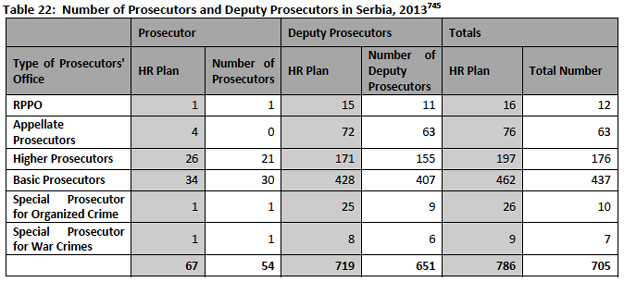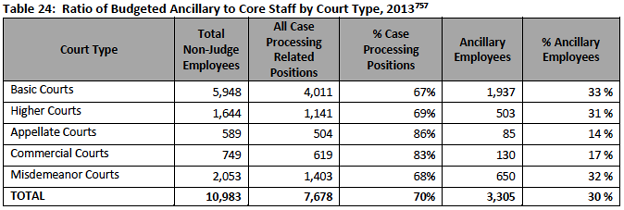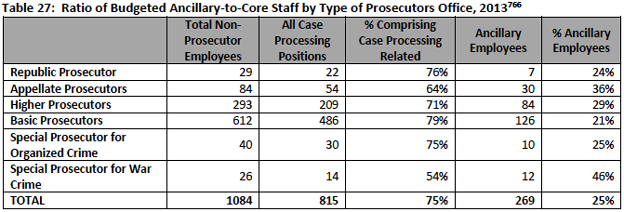The ‘shadow workforce’ is reported to be extensive, numbering thousands, but their precise numbers and roles are unknown.
The judiciary employs over 1,100 temporary employees, representing 10 percent of the total
workforce. In some instances, they are utilized to backfill vacant
positions rather than substantively filling those positions. In other
cases however, the use of temporaries results in a total workforce
significantly exceeding the systematization. There is no effective
position control for individual courts, court types, or court levels.
However, consistent with statute, the MOJ has required that those
temporary staff exceeding 10 percent of the overall workforce be removed by June 30th, 2014.767













